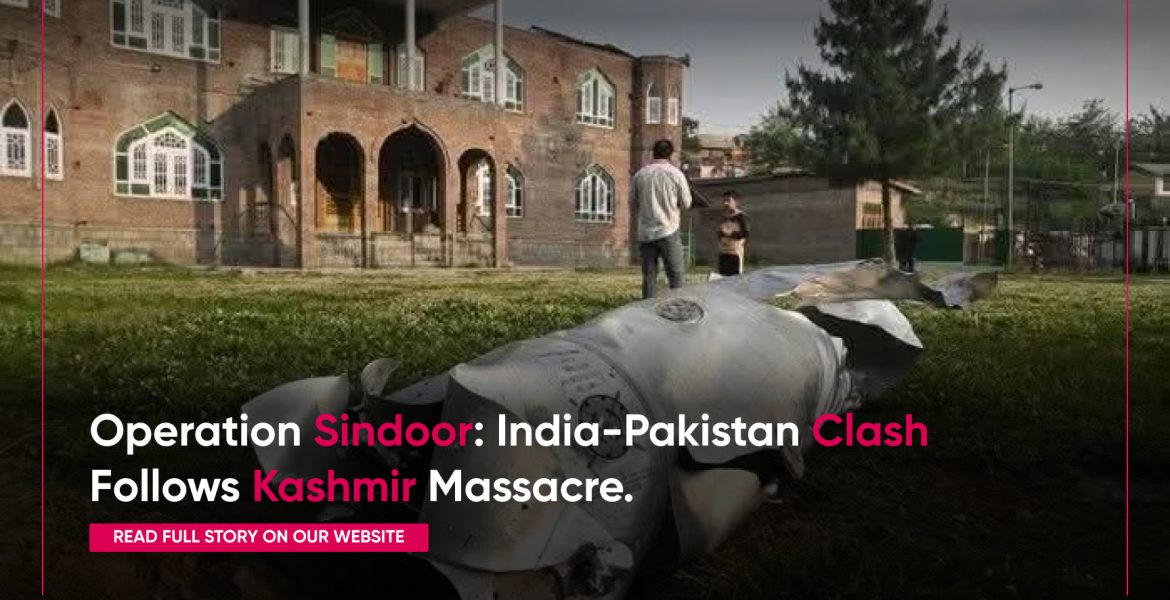In response to the April 22 Pahalgam terror attack that killed 26 pilgrims (25 Indians and one Nepali), India announced a retaliatory operation named “Operation Sindoor.” Indian military statements, issued in the early hours of May 7, said precision missile strikes hit nine militant camps across Pakistan and Pakistan-administered Kashmir. The Press Information Bureau (PIB) press release stressed the strikes were “focused, measured, and non-escalatory,” deliberately avoiding any Pakistani military bases. Officials noted Prime Minister Modi had earlier given the armed forces “complete operational freedom” to retaliate against the Pahalgam attack.
According to India’s official account, Operation Sindoor struck sites where last month’s attack was planned and directed. A government spokesman said India had shown “significant restraint” in choosing targets and tactics. No Pakistani installations were hit, the statement emphasized. Indian news outlets echoed the official line, reporting that “nine terrorist camps” were targeted across Pakistan and PoK. The strikes reportedly took place in the early hours of May 7 (May 6 late night IST), with Indian air defenses on alert along the border.
Muzaffarabad, capital of Pakistan-administered Kashmir, at night on May 7 after the reported strikes. Pakistani officials said Indian missiles hit Muzaffarabad and other locations.
Pakistan’s Response
Pakistani officials strongly rejected India’s account and vowed retaliation. The military spokesman, Lt. Gen. Ahmed Sharif Chaudhry, said strikes were launched on Kotli and Muzaffarabad in Pakistan-administered Kashmir and on Bahawalpur in Punjab. He told Pakistani media the missiles were fired from Indian airspace in a “cowardly and shameful” attack. Pakistan’s Information Minister and the Inter-Services Public Relations (ISPR) directorate later listed five locations as targets: Kotli, Muzaffarabad, Bagh, and Muridke (near Lahore) in Azad Kashmir, and Ahmedpur East (Bahawalpur) in Punjab. In contrast to India’s “nine sites” claim, Pakistani military sources insisted that only those areas were struck.
Pakistani media reported civilian casualties. ISPR said at least three Pakistanis were killed and 12 injured. In Ahmedpur East (Bahawalpur), a child was among the dead, and 12 others were wounded; two civilians were killed in Kotlidawn.com. Both the Kotli and Bahawalpur attacks allegedly damaged mosques and homes. Pakistan’s state broadcaster PTV claimed the Pakistan Air Force shot down two Indian jets in retaliation, while all Pakistani aircraft remained unscathed. India has not confirmed any aircraft losses. Meanwhile, Pakistan closed its airspace and mobilized air defenses; Prime Minister Shehbaz Sharif convened the National Security Committee to coordinate a “befitting reply” to what he called a “warlike act” by India.
Key Claims: According to India, “Operation Sindoor” consisted of precise missile strikes on nine terror camps in Pakistan and PoK, executed with restraint and no Pakistani military targets hit. Pakistan’s military claims the strikes hit Kotli, Muzaffarabad, Bagh, Muridke, and Ahmedpur East (Bahawalpur), causing civilian deaths (a child and two others) and a mosque. Pakistani officials also assert that their air force downed two Indian jets during the incident. India’s official statements make no mention of any aircraft encounters.
International Reactions
International response has so far been cautious. A U.S. State Department spokesperson said it was “aware of the reports” but had no independent assessment, calling it an “evolving situation” under close review. In Washington, reporters noted that the strikes brought the nuclear-armed neighbors into direct conflict for the first time in years. Former U.S. President Donald Trump was asked about the news and called the situation “a shame” that “we just heard about” at the Oval Office. No formal condemnation or support for the strikes has been issued by major powers or international organizations beyond official bilateral channels. (The United Nations and other bodies had earlier condemned the Pahalgam massacre; on the strikes, most world leaders have urged restraint but offered no public endorsement.) Analysts warned the exchange risked dangerous escalation, given the countries’ nuclear arsenals.
India and Pakistan thus find themselves in a tense standoff. Both governments claim moral high ground—India framing the strikes as a legitimate counter-terrorism measure, Pakistan decrying an unprovoked assault on civilians. As of now there are no independent verifications of the exact damage on either side, and both militaries remain on high alert. The coming days will reveal whether “Operation Sindoor” settles the score or deepens the crisis.







